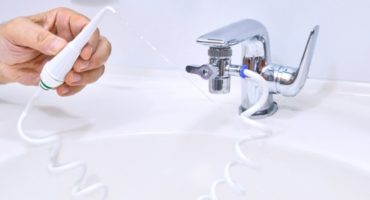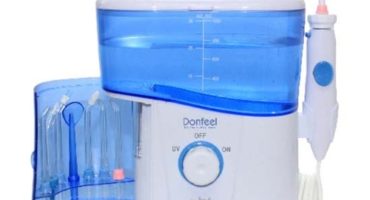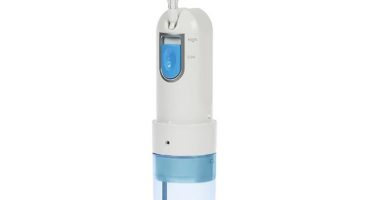Irrigators - A fairly new technical solution in dentistry. This is a device for delivering the finest water stream or drug solution to the oral cavity with high-frequency pulsation and under strong pressure.The device effectively removes dirt that is inaccessible to an electric or conventional toothbrush. Brushing takes place between the teeth, in the gingival pockets, in subtle dental defects, in microcracks.

Classic irrigator
In addition, the device gently contacts the gums and tongue, massaging them. Also, an irrigator will help reduce gum disease.
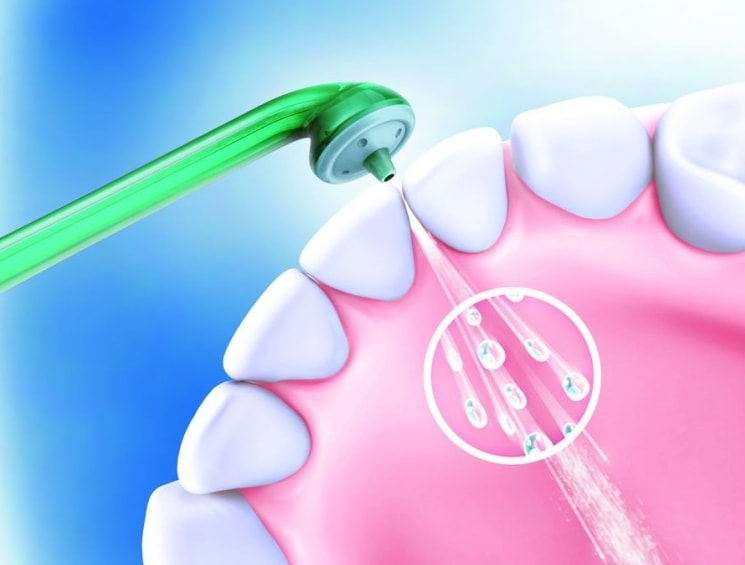
Cleaning interdental spaces with a jet of water
Apparatus design
The irrigator has a fairly simple design. The device includes a container for water and a special solution, a pump, nozzles of various shapes that can be replaced. Depending on the method of operation, the device can be stationary or mobile.
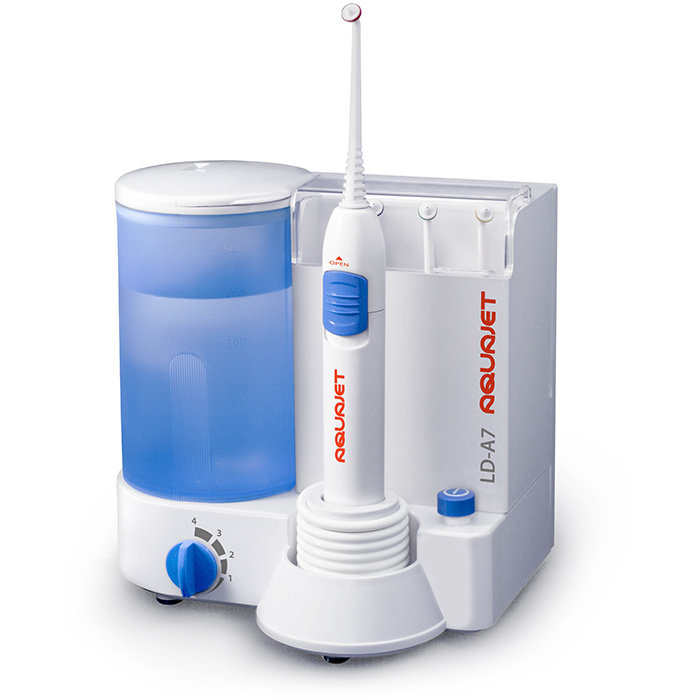
Stationary option
A stationary appliance is more suitable for use in a home. It is connected to a conventional power supply network (220 W) and is quite simple to use. Powered by electricity provides unlimited time of use, which is very convenient.
A high-power pump is installed in the devices, and the water tank is very capacious (from 500 milliliters). Some models are mounted on the wall, others must be placed on the sink or table, rubberized legs provide stability.
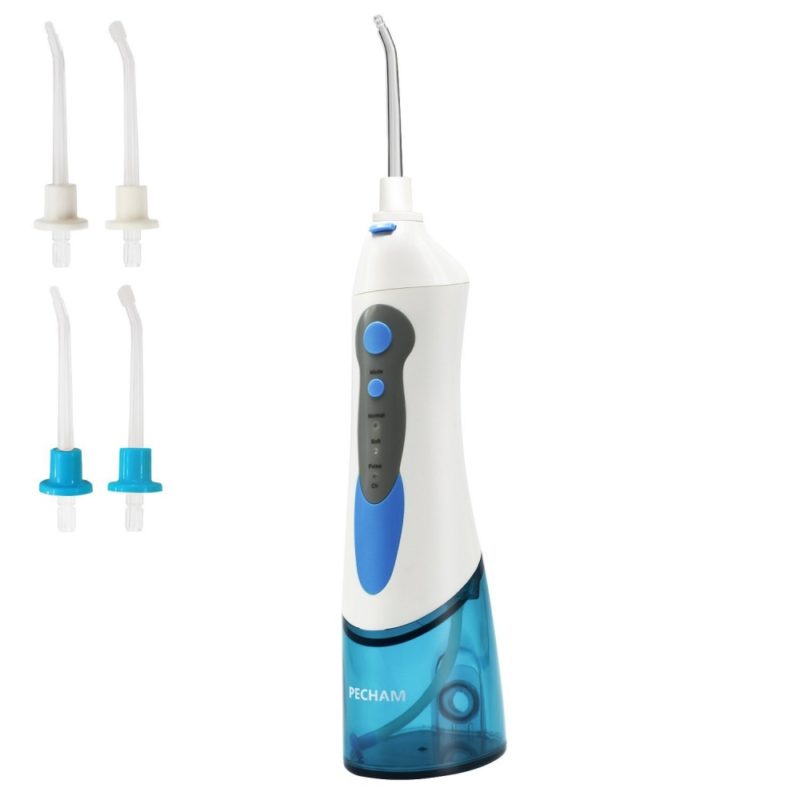
Portable model
In compact devices, the design is more simplified. The water tank is small (up to 150 ml) and attached to the handle, the number of nozzles is limited, and the pump power is lower than in the stationary model. The compact irrigator works on the accumulator or batteries. This option is suitable for travel.
Recommendations for the use of irrigator
- Preventive and therapeutic procedures for periodontitis and gingivitis.
- Providing care for orthodontic and orthopedic constructions.
- Prevention of tooth enamel destruction.
- Lavage of the nasal sinuses.
Device features
There are many types and models of irrigators, but they all work on the same principle. The device is manufactured by many well-known companies, such as Philips, Panasonic, Braun, Oral-B.
Almost every device has a timer that allows you to track cleaning time; nozzle wear indicator, indicating that it is time to replace it; battery indicator, indicating the level of charge.
Also, some models are equipped with separate nozzles for implants, crowns, bridges and other structures. Sometimes manufacturers add nasal nozzles, with which they wash the sinuses with sinusitis and other diseases.
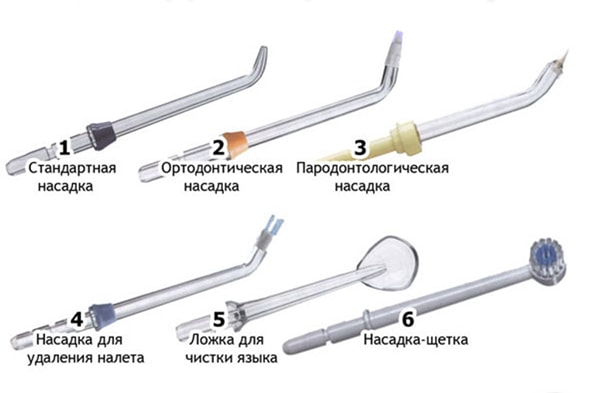
Nozzle set
Many devices allow you to adjust:
- number of pulses per minute;
- pressure and flow rate of water and air;
- operating modes.
Some models provide tools for cleaning nozzles, for example, it can be an ultraviolet disinfectant lamp. The presence of a case for storing the device facilitates transportation and allows you to maintain its hygiene.
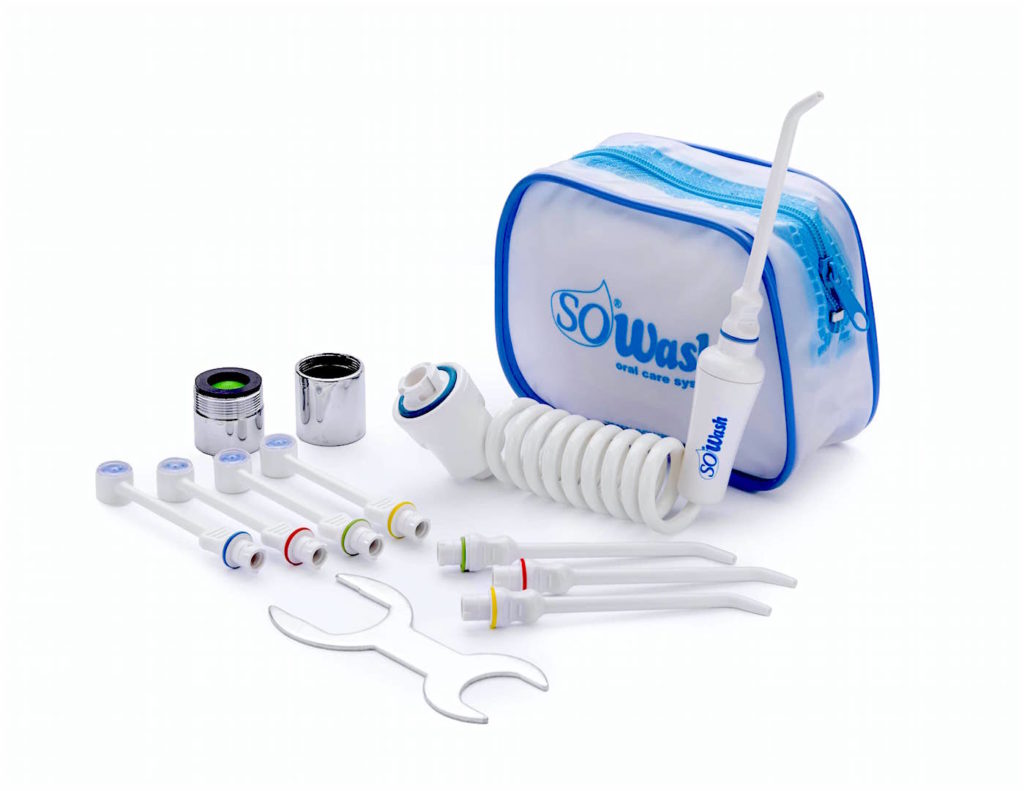
Plumbing irrigator
Precautionary measures
- Each instrument is usually accompanied by an instruction that sets out the operating rules in detail.However, it is recommended that you consult your dentist before using the machine. If, for example, there are non-removable structures for correcting a bite, then the orthodontist will explain how to properly regulate the fluid stream in the device for maximum cleaning.
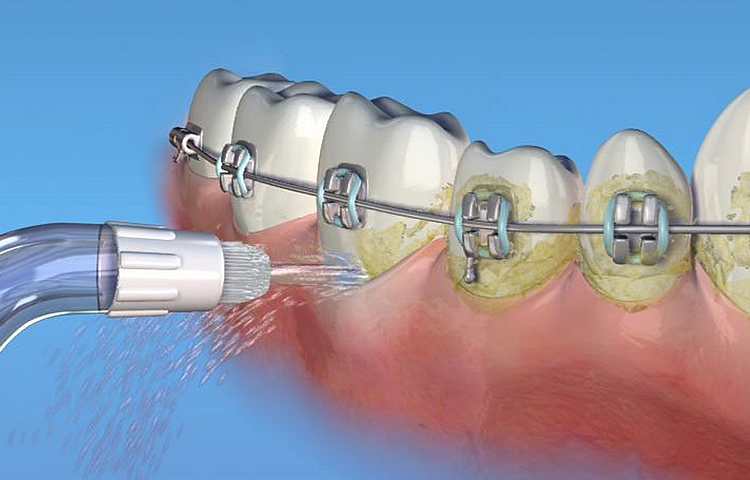
Braces Cleaning
- The device is usually stored in the bathroom, therefore, it is necessary to protect those nodes where the battery and wiring are from moisture.
- It is also necessary to properly hold the device during mouthwash: adhere to the desired angle during processing. You need to start cleaning with a low pressure, gradually increasing it. Dentists recommend mentally dividing the upper and lower jaws into four sections, cleaning is carried out alternately. It is necessary to direct the fluid to the gums very carefully, under low pressure, otherwise there is a risk of getting inflammation.
- It is not necessary to use ordinary dental floss together with an irrigator, but you need to use a regular or electric brush at least twice a day.
- It is also recommended to regularly change the irrigation nozzle heads, on average, their service life is about six months. In addition, it is important to properly care for the device: monitor the water hardness and its pressure, as well as pay attention to power surges and ensure the safety and integrity of device parts.
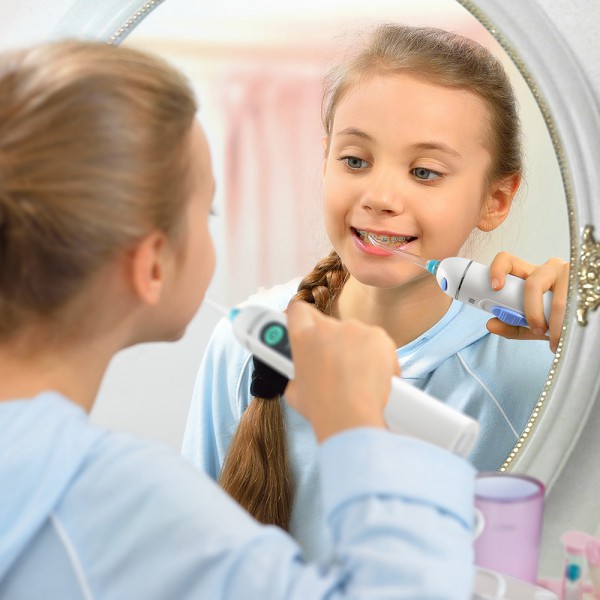
Use of an irrigator is recommended since six years
- Children are advised to use the device from the age of six and brush their teeth at the lowest water pressure.
Advantages and disadvantages
The indisputable advantages of an irrigator include:
- effective cleaning of the oral cavity in hard to reach places;
- decreased tooth sensitivity;
- prevention of tartar and caries formation;
- treatment of periodontal disease and other diseases of the oral cavity;
- elimination of halitosis;
- improved gingival circulation;
- delicate cleaning and massage of soft tissues;
- the ability to adjust the pressure of the jet;
- the presence of a mobile model for travel;
- large selection of nozzles.

Liquid Appliance
Among the minuses of the device:
- high price;
- the inability to cope with a sufficiently dense bacterial or mineral plaque;
- the choice of portable models is limited.
Obviously, the irrigator has more advantages than disadvantages, which means that buying it will undoubtedly be the right decision.
What to use - an electric brush or an irrigator for teeth?
The answer to this question is actually simple. You should choose both options. An electric brush and a tooth irrigator have completely different functions. Using a brush, you can remove the bulk of dirt, mineral and bacterial deposits, as well as bleach enamel.
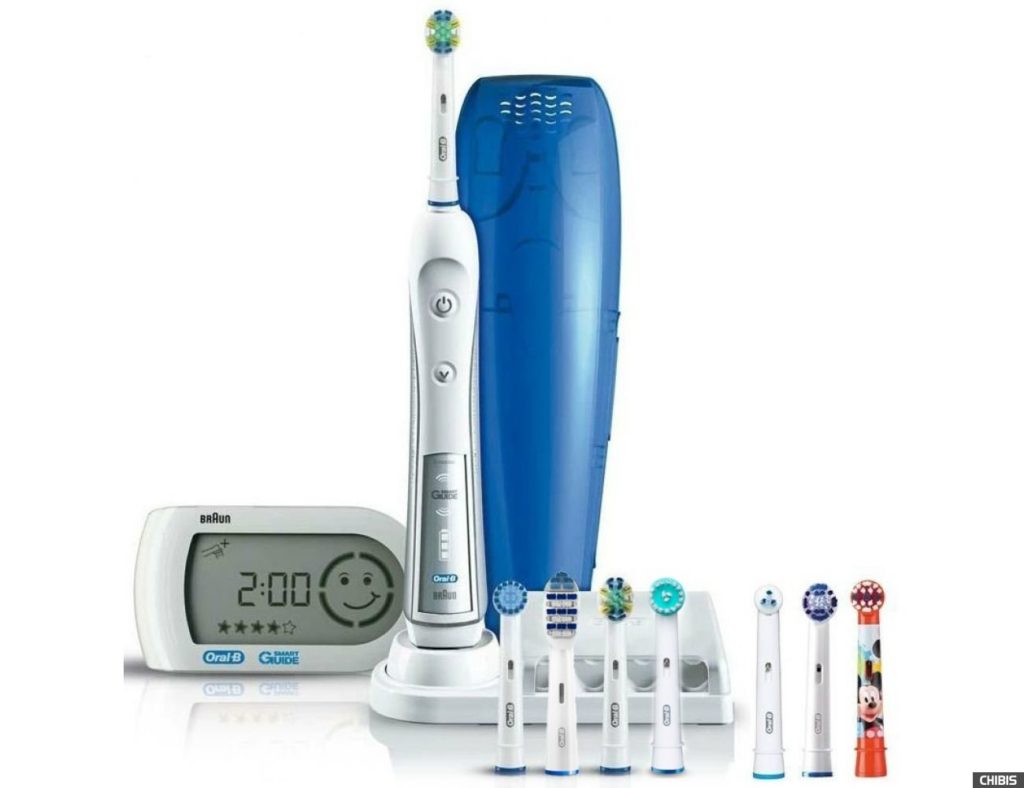
The unit may have an additional timer and various nozzles
But no matter how efficiently the brush cleans the surface of the teeth from plaque and food debris, it alone is not enough to ensure complete oral hygiene. The remnants of food, plaque and bacteria that remained between the teeth are unattainable for her, you can not do without an irrigator.
Thus, the electric brush provides primary cleaning of the teeth, and the irrigator completes the hygiene procedure.
An electric toothbrush is an improved version of the classic toothbrush, and an irrigator is a high-tech alternative to dental floss. Each instrument has its own effect; funds do not replace, but complement each other. Therefore, the best solution would be to purchase two devices at once, which together provide comprehensive care for the oral cavity, protect against many diseases and help save money on the dentist.

